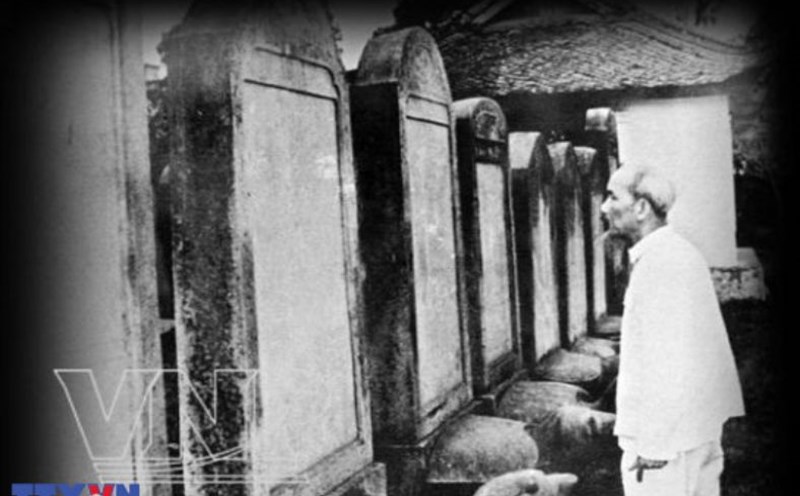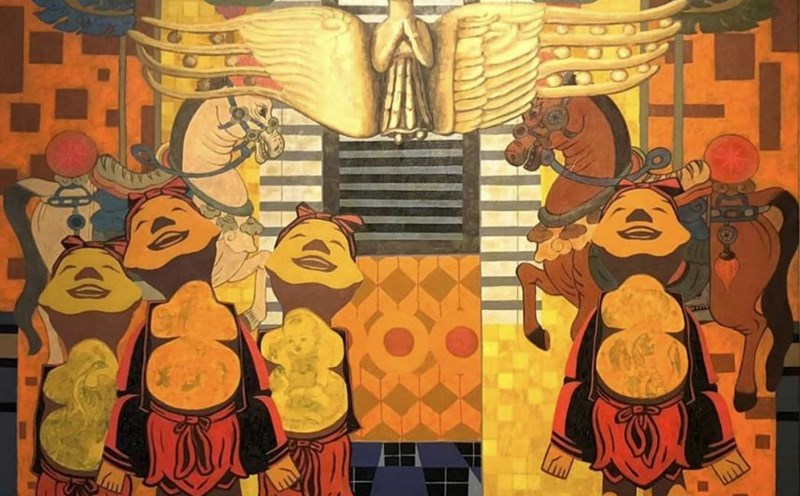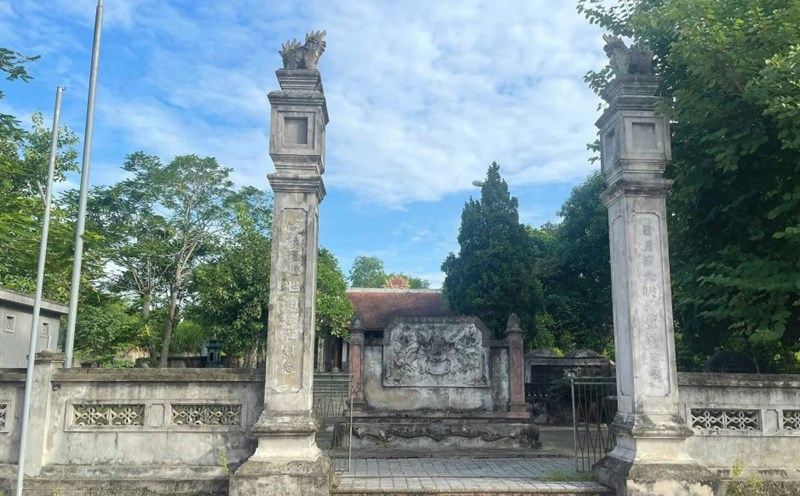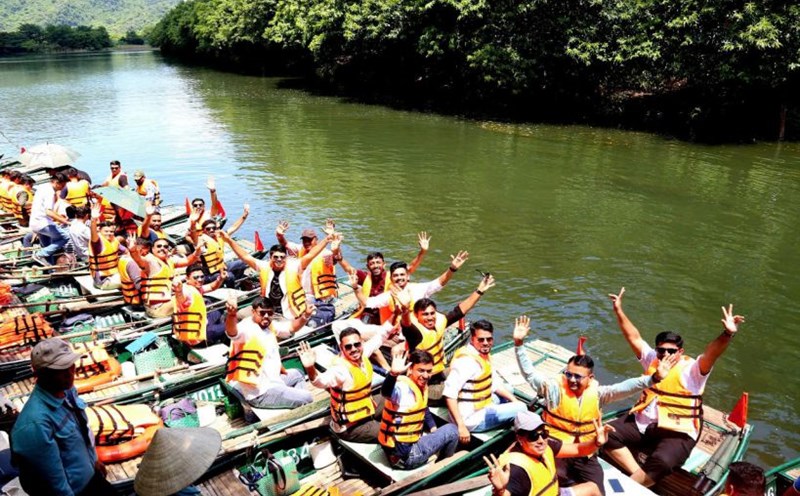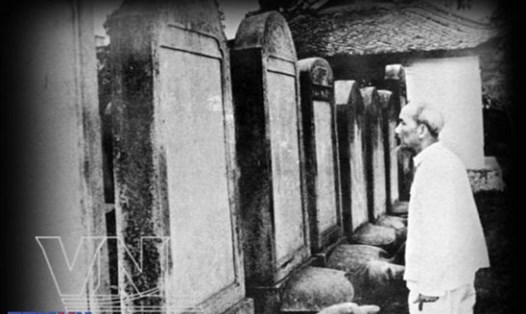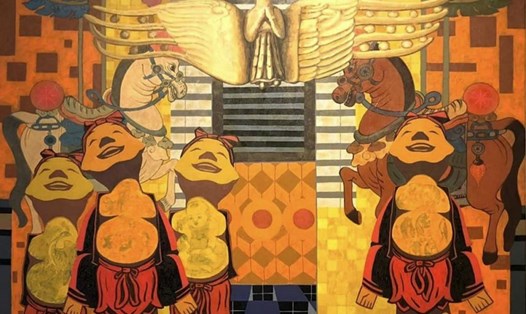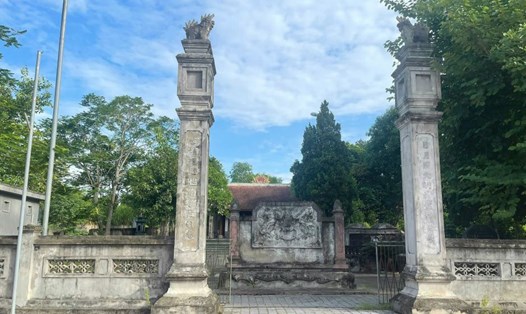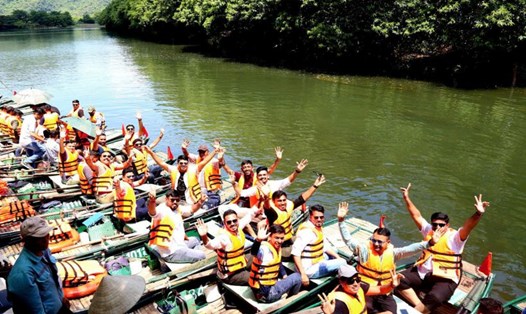Nearly 500,000 pages of documents collected and digitized
The Han Nom heritage was once formed and preserved in the land of TT-Hue, accounting for the largest volume in the Han Nom document treasury of Vietnam. However, through the fierce historical changes, the Han Nom documents of Hue were scattered, some were severely damaged. According to researchers, most of the Han Nom documents of Hue, especially the Han Nom royal documents (including the Nguyen Dynasty's Chau Ban, Nguyen Dynasty's Woodblocks...) are no longer in Hue.
MSc. Hoang Thi Kim Oanh - Director of the General Library of Thua Thien - Hue province - said that currently in the province, Han Nom documents of all kinds are still scattered among the people, including the royal families of the Nguyen dynasty. These are precious and rare documents with many values in terms of history, content and materials.
Most of these types of documents are highly valued by the people as well as by clans, private homes, palaces, religions and beliefs, considered as spiritual treasures and are preserved with utmost solemnity and care. Apart from some that have been lost or damaged due to war, natural disasters...
From 2009 to present, the Thua Thien - Hue Provincial General Library in collaboration with the Ho Chi Minh City General Science Library has implemented a program to collect and digitize Han Nom documents in Thua Thien - Hue province. Through many years of hard work in the field and survey, research groups have digitized nearly 500,000 pages of Han Nom documents in 199 villages, 967 clans and 19 palaces and private homes. The digitized documents include: royal decrees, genealogies, funeral orations, diplomas, etc.
From the beginning of 2024 to the present, the units have conducted fieldwork, collected and digitized Han Nom documents in 14 villages of 6 communes in Quang Dien and Phong Dien districts. Digitized more than 8,500 pages corresponding to 169 documents in 14 villages with 35 clans.
The work of preserving and promoting values still faces many difficulties.
Dr. Phan Thanh Hai - Member of the National Cultural Heritage Council, Director of the Department of Culture, Sports and Tourism of Thua Thien - Hue province - added that from exploiting the results of the work of collecting and digitizing Han Nom heritage, the research team has coordinated with Han Nom experts to compile, translate and print a number of works such as: Directory of summary of Nguyen Dynasty royal decrees in Thua Thien - Hue; Royal decrees, royal decrees, and edicts of the Nguyen Dynasty in Thua Thien - Hue province; Official degrees of Nguyen Dynasty in Thua Thien - Hue province; Han Nom documents and petitions of villages in Thua Thien - Hue province"...
Although many positive results have been achieved in conservation work, according to experts and researchers, the above statistics are still quite modest compared to the inherently huge Han Nom document treasure of Thua Thien - Hue.
According to the Thua Thien - Hue Provincial General Library, in the process of surveying and collecting digital documents kept in clans and private homes, some documents have been seriously degraded, especially documents such as decrees, edicts, royal decrees, and original genealogies, administrative documents, etc., causing difficulties in initially determining basic information about the documents.
The preservation of documents of most families and private homes is still lacking in method, the preservation method is still spiritual, some owners are hesitant and afraid of loss, do not understand the importance of preserving and restoring documents,
In addition, human resources directly serving the collection and fieldwork require practical experience at the local level, especially in persuading and mobilizing owners to agree to research and study documents to create a premise for digitization.
Translating sources of documents requires a good understanding of the Han Nom language as well as an understanding of the history, culture, and geography of each locality.
According to Dr. Phan Thanh Hai, in the coming time, there should be a policy to train and encourage those who work in the management, research, and collection of Han Nom cultural heritage . In particular, the staff working in heritage conservation, museums, and libraries must be trained and equipped with Han Nom knowledge at a certain level, so that when approaching this type of heritage, they must at least be able to read the basic content and recognize the value of each document.



